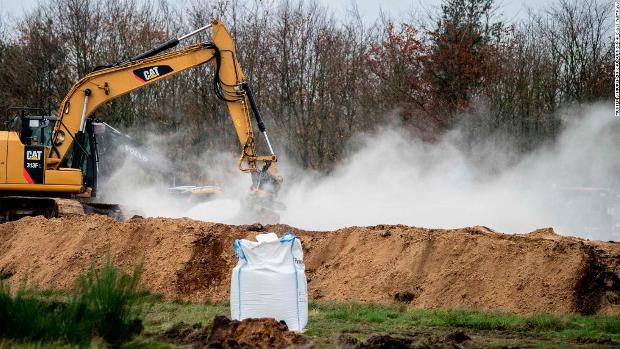Experts say no link between Mink bodies in Denmark and Covid in groundwater

COLOMBO – The decision by the Danish government to incinerate the remains of millions of Mink, slaughtered and buried after a variant of the COVID-19 virus spread among the animals is refuelling the debate over the funeral rites of Muslims who die of the virus in Sri Lanka.
Sri Lanka and China are the only countries in the world that mandate the remains of Covid victims be cremated without deference to the religious preferences of the deceased person’s families.
Cremation is prohibited for Muslims and some Christian sects, although the Roman Catholic Church allows the practice under special circumstances.
Sri Lanka initially permitted both burials and cremation according to World Health Organization (WHO) guidelines but changed the rules after Right-Wing groups said burial of bodies would contaminate the groundwater.
This assertion championed by some medical doctors in Sri Lanka has been refuted by experts.
One of the world’s leading virologists, Professor Malik Peiris was asked at a recent Keystone Symposium whether the Covid virus can live in a cadaver and whether there is the possibility of contaminating groundwater in case the remains of a Covid deceased is buried, gave this answer:
“No, that is a simple answer because viruses can only replicate in living cells, unlike bacteria. Some types of bacteria can replicate out in the environment. But viruses by definition can replicate only inside living cells. So once the patient has died and the cells have died the virus can no longer replicate and the virus will die.”
Peiris is the Chair of Virology in the University of Hong Kong and is credited with discovering the SARS virus.
This fact, that viruses cannot survive in dead cells is taught in the Grade 10 Science curriculum in Sri Lanka’s government-run school system.
Some media erroneously reported that the Danes were exhuming and incinerating the slaughtered Mink because their bodies were spreading the virus into the groundwater.
Instead, the facts are different; some 5.5 million of the 15 million bodies which were buried in what the Danish government has called a “botched operation”, are emitting nitrogen and phosphorus and local residents have complained that their drinking water is being polluted.
Some of the bodies had risen to the surface and caused what Denmark is calling a “social issue”.
It is believed the gas used to kill them caused the carcasses to swell and resurface, prompting Danish media to dub them “zombie mink.”
The exhumation will be done next May, the government of Denmark said.
“Once the Mink are no longer contaminated with COVID-19 they will be transported to an incineration facility and burned as commercial waste,” the Danish Ministry of Food and Agriculture was quoted as saying.
Sri Jayewardenepura University Professor of Geology Meththika Vithanage has asserted that the Danish government has found the COVID-19 virus has leaked into the groundwater from the Mink cadavers.
“The water has been polluted by the decaying body fluids and viruses coming out of the dead Mink,” she told reporters on December 23.
A new study prepared by the Geological Survey of Denmark and Greenland and the Technical University of Denmark says groundwater may already have become contaminated by fluid from the bodies, Denmark’s Radio4 said after seeing a copy of the report.
Before the dead mink were buried, authorities had said the bodies would not pose a risk to drinking water or protected areas.
There has been no specific mention of viruses entering the groundwater.
Community Medicine Specialist Dr. Nihal Abeysinghe contradicts Vithanage’s assertion saying that “some professors in this country” are trying to bolster their erroneous theory that cadavers of COVID-19 dead can spread the virus by using the Danish example.
In a Facebook post, Abeysinghe, who is a former WHO consultant on infectious diseases, pointed out that “the issue of the remains of Mink spreading the virus into the groundwater in Denmark has not arisen.”
The issue of the mandatory cremation of the cadavers of all persons who die of the disease has become an emotional focus point of a protest against the government, which is seen as trampling upon minority rights.
Last week protestors tied white cloths to the fence around the Borella Cemetery to mourn the death and subsequent cremation of a 20-day old Muslim infant who the health authorities had claimed died of COVID-19.
Later the opposition Samagi Jana Balavegaya (SJB) led a protest also at the cemetery to raise the issue. Like-minded Sri Lankans overseas have staged similar protests in Toronto, New York, Paris and several other Western cities.
-economynext.com

